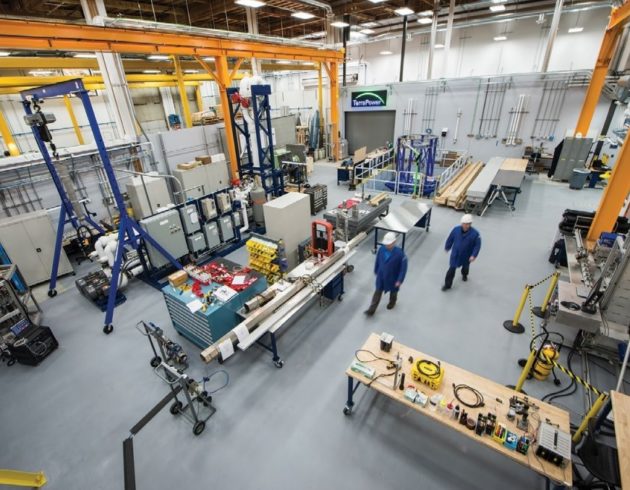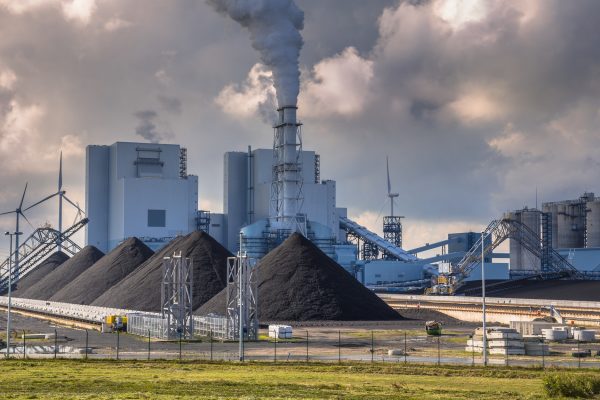The race for rare earth minerals
There are an estimated 1.4bn cars on the world’s roads today. Around 78m new cars are sold every year. To head off the worst effects of climate change, every single one will need to go electric eventually.
Read more
• Pea Ridge is the only fully permitted mine in the world (ex-Chinese control) that can supply all the critical rare earth elements, in the proper portions
• 2,200 acres; 750 additional waterfront acres on MS river (last place can turn a barge around in the Mississippi River); plus, Crystal City including air field
• 3 different rare earths deposition: 1. Tailings Lake (on the surface) 2. Inside Iron Ore (just like China) 3. Breccia Pipes
• 130k tons of rare earths in the tailings lake; current value (conservatively) US$5bn
• Meets 100% of U.S. rare earth magnet import demand within 3 years (and double production within 7 years).
• Ability to import high grade material from around the world for processing (China Model) in addition to on-site resource
— cobalt, lithium, nickel carbonate focus for high-capacity batteries
• Fully supported by the state of Missouri
• Proven waste management
• JV Structure -> the sole asset owner is, Caldera Holdings, 100% controlled by Jim Kennedy, our partner, which allows total flexibility in structuring for NewCo or asset merging/placement
• The on-site tailing are from the previous iron-ore processing (self-sustaining, fully-integrated vertical for magnets)
• Additional battery materials will be supplied from hydroxides focused on grade, such as cobalt hydroxide from Lubumbashi, 35%+ in ground which is not achievable here, or anywhere known in quantity outside of that region
• The total funding estimates: Magnet campus (covers 100% US demand end-to-end) = US$3bn, and Cobalt, Nickel, Lithium hydroxide to carbonates campus (high-capacity batteries) = US$450mn; private capital overall of US$1.5bn overall with tranche one targeting US$750mn. Remaining capital is expected from Global Govts, Federal grants and loan programs
• Can be flexible on staging the investment tranches / different aspects of total project
• Resource report by Pincock, Allen Holt -> we are working with SLR to make this a reserve report
• SGS Tailings Report
• Spreadsheet: shows our three reserves vs. Mt. Pass and China's Bayan Obo mine (old pricing data)
• DoE RFI summarizing the investment plan (ex-carbonate processing: hydroxides and spodumene to carbonates for cobalt, nickel, lithium)
• Tailings reclaim project presentation
This project began in 1954-64, when there was US$70mn invested (known as the Bethlehem Steel project,~US$2bn today) which started producing iron ore pellets in 1964. The surface tailings that accumulated over 40 years of operation contain 120k tons of REE. Market timing is ideal given the global supply constraints + quality of the material + global government funding opportunities + existing concentration risk.
Andrew Whitney - CEO, Resume
REnergy International Corp was created in 2020 in a response to the US government’s need for a domestically-sourced supply of rare earth elements (REEs). Over 80% of America’s current supply now comes from China.
REnergy International Corp is operated by Rare Elements of the World and KL Mining. These entities were formed by an experienced coal mining team who controls a revolutionary process to cost-effectively separate REEs and other precious metals from mineral-rich coal. REnergy International Corp has already acquired and will continue to acquire mineral rich properties where independent tests have demonstrated a significant amount of REEs and precious metals contained within the coal.
REnergy International Corp has identified, assets in one of the only US areas with significant amounts of REEs embedded within the coal. Prices of qualified properties are currently depressed because of the declining use of coal as an energy source.
The value arbitrage of this business and its related investment is in the acquisition of depressed properties, proving the separation process works on a commercial scale, and then revaluing the assets based on the cash flow from the sale of the recovered rare earth elements and precious metals.
Below are informational sections
Separation Process
A Few of the Promising Methods Being Tested to Extract Rare Earth Elements (REEs) From Coal
 Separation Technologies include utilization or modification of currently available, commercial, physical separation systems (i.e., beneficiation via size, density, froth flotation, magnetic, ultrasound), hydrometallurgy and solvent extraction/digestion processes, and pyrometallurgy techniques (i.e., elec-tro-slag refining, acid roasting) to separate and concentrate REEs from coal- based resources such as coal, coal refuse, clay/sandstone over/under-burden materials, aqueous effluents, acid mine drainage sludge, and power generation ash. Advanced or new transformational REE separation concepts such as physical, chemical, electrical and thermal extraction, acid/base leaching, and ion exchange; reactive grinding, photochemical, ultrasonic-assisted, micro- wave-aided, photophoretic, plasma, and supercritical CO2 separation; as well as advanced sorbents and membrane systems, are being considered to further enhance REE separation. Researchers at West Virginia University (WVU) Re- search Corporation, aided by its partnership with West Virginia Department of Environmental Protection and supported by the National Energy Technologies Laboratory (NETL) have been working on how to separate REEs while clean- ing up the acid mine drainage (AMD) from abandoned or still operating coal mines. Using electro-membrane extraction and other methods of separation, the WVU techniques showed that nearly 100 percent of all REEs in raw AMD or sludge can be recovered, a significant development toward realizing commercialization.
Separation Technologies include utilization or modification of currently available, commercial, physical separation systems (i.e., beneficiation via size, density, froth flotation, magnetic, ultrasound), hydrometallurgy and solvent extraction/digestion processes, and pyrometallurgy techniques (i.e., elec-tro-slag refining, acid roasting) to separate and concentrate REEs from coal- based resources such as coal, coal refuse, clay/sandstone over/under-burden materials, aqueous effluents, acid mine drainage sludge, and power generation ash. Advanced or new transformational REE separation concepts such as physical, chemical, electrical and thermal extraction, acid/base leaching, and ion exchange; reactive grinding, photochemical, ultrasonic-assisted, micro- wave-aided, photophoretic, plasma, and supercritical CO2 separation; as well as advanced sorbents and membrane systems, are being considered to further enhance REE separation. Researchers at West Virginia University (WVU) Re- search Corporation, aided by its partnership with West Virginia Department of Environmental Protection and supported by the National Energy Technologies Laboratory (NETL) have been working on how to separate REEs while clean- ing up the acid mine drainage (AMD) from abandoned or still operating coal mines. Using electro-membrane extraction and other methods of separation, the WVU techniques showed that nearly 100 percent of all REEs in raw AMD or sludge can be recovered, a significant development toward realizing commercialization.
 Plasma, which is distinct from the liquid, gaseous and solid states of matier, is formed by striking a gas with enough energy that gas molecules are ion- ized. During the past century, thermal plasma treatment saw applications in torch welding/cuting, spray coating, metal synthesis, extractive metallurgy, refining metallurgy, hazardous waste destruction and more. The collaborators researched using low-temperature plasma to pretreat coal-based materials resourced from West Kentucky No. 13 and Fire Clay mines located within the state of Kentucky. Surface area measurements found that plasma treatment provided increased surface area and pore volume which made other process- es more effective at recovering REEs. This novel technology integrated with traditional leaching and extraction processes was demonstrated to effectively recover REEs from the coal samples. Low-temperature plasma treatment was found to provide heavy REE leaching performance improvements on the low-density, higher carbon content fractions of the West Kentucky No. 13 coal, and high-temperature oxidation provided exceptionally high REE recovery for all fractions of both the Fire Clay and West Kentucky No. 13 coarse refuse materials.
Plasma, which is distinct from the liquid, gaseous and solid states of matier, is formed by striking a gas with enough energy that gas molecules are ion- ized. During the past century, thermal plasma treatment saw applications in torch welding/cuting, spray coating, metal synthesis, extractive metallurgy, refining metallurgy, hazardous waste destruction and more. The collaborators researched using low-temperature plasma to pretreat coal-based materials resourced from West Kentucky No. 13 and Fire Clay mines located within the state of Kentucky. Surface area measurements found that plasma treatment provided increased surface area and pore volume which made other process- es more effective at recovering REEs. This novel technology integrated with traditional leaching and extraction processes was demonstrated to effectively recover REEs from the coal samples. Low-temperature plasma treatment was found to provide heavy REE leaching performance improvements on the low-density, higher carbon content fractions of the West Kentucky No. 13 coal, and high-temperature oxidation provided exceptionally high REE recovery for all fractions of both the Fire Clay and West Kentucky No. 13 coarse refuse materials.
Ion Exchange / Chemical Rinsing - Ion Exchange involves rinsing the coal with a special solution that releases the REEs bound to it, which is more environmentally friendly and less demanding in terms of energy use than methods explored in the past. In a NETL-supported project with Virginia Tech, researchers developed a process leveraging simple ion-exchange leaching techniques currently used by industry. Quite simply, ions exchange places with one another, and thus different types of materials can be separated. “Essentially, REEs are sticking to the surface of molecules found in coal, and we use a special solution to pluck them out,” said Pisupati. “We experimented with many solvents to find one that is both inexpensive and environmentally friendly.” Ammonium sulphate was found to be the most effective solvent, but there are many more tests to come. According to the group’s work published in Metallurgical and Materials Transactions, they were able to extract 0.5 percent of REEs in their prelimi- nary study using a basic ion exchange method in the lab. They are confident that they can increase the recovery to 2 percent through advanced ion exchange methods.
 The $13 billion global rare earth market is growing at 10.8% per annum according to Global Market Insight Inc., as demand for electric vehicles, cellphones and other products rise. Since 1988, China has been the dominant supplier of REEs. In 2011, China provided 95% of the global market and decided to restrict exports and favor its own domestic industries—a decision that resulted in REE price volatility. Consequently, rising concern among industrialized nations has revitalized global interest in REE mineral exploration and extraction.
The $13 billion global rare earth market is growing at 10.8% per annum according to Global Market Insight Inc., as demand for electric vehicles, cellphones and other products rise. Since 1988, China has been the dominant supplier of REEs. In 2011, China provided 95% of the global market and decided to restrict exports and favor its own domestic industries—a decision that resulted in REE price volatility. Consequently, rising concern among industrialized nations has revitalized global interest in REE mineral exploration and extraction.
Worldwide, several new commercial REE projects, in various stages of planning and development, are focused on diversifying supply; however, new efforts to purify and refine REEs remain limited.
In 2009, intensified interest in strategic materials culminated in discussions regarding our nation’s ability to secure reliable supplies of REEs and other strategic materials.
Strategic materials were identified as critical for growing the U.S. green energy and electronics industries, as well as for specialty military applications. In response, DOE released the first Critical Materials Strategy in 2010, identifying ytirium (Y), neodymium (Nd), europium (Eu), terbium (Tb) and dysprosium (Dy) as critical REEs.

There are an estimated 1.4bn cars on the world’s roads today. Around 78m new cars are sold every year. To head off the worst effects of climate change, every single one will need to go electric eventually.
Read more
The new U.S. plan to rival China and end cornering of market in rare earth metals
Read more
US military interests have aligned MP's rare earth mining activities with the geopolitical agenda. EVs - which are central to MP's thesis, are at an inflection point of exponential growth in the adoption S-Curve.
Read more